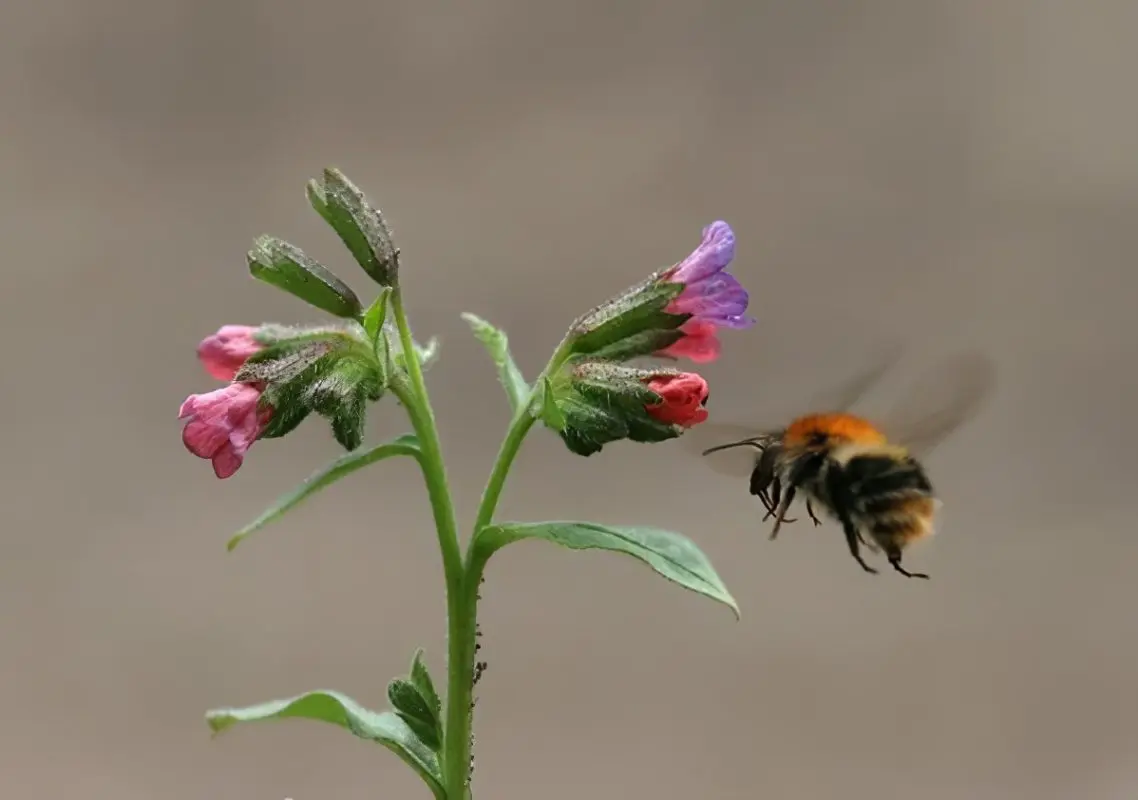Contents
Growing, caring for and using the beneficial properties of lungwort
Botanical characteristics of lungwort

Lungwort is a perennial plant belonging to the borage family. On an upright and branched stem are short hairs. Lungwort does not grow above 30 cm. The rhizome of the plant is very developed and thick. The leaves at the top of the stem are sessile, while the lower leaves are on short petioles and have whitish spots. All leaves of the plant are rough and have fluff. The flowers of the plant are bells, which are located at the ends of the branches. The flowering period is a wonderful sight, because in addition to beautiful crimson flowers, purple or blue bells can be observed. The fruit of the plant is 4 nuts, which are pointed at the ends.
Flowering lungwort begins in April and continues until the end of May. The fruits ripen in mid-summer. This plant grows in mixed forests, on the edges of forests, between shrubs and in clearings of broad-leaved forests.
Cultivation of lungwort
Shaded and cool places are more suitable for this plant. Lungwort does not like heat, but it is relative to moisture. The best soil for this plant is sandy or loamy, and lungwort grows well and develops on slightly acidic or alkaline soil. The soil should be loose and contain humus.
Lungwort is easy to propagate vegetatively. However, it will not withstand the frequent division of the bushes. For vegetative propagation, the time is right after the flowering of the plant has begun, and at any stage of its growth. The bush plots, together with the renewal bud, must be planted in the ground. During planting, the roots of the plant must be cut. The soil around the seedlings should be mulched.
Mulching is a way to keep moisture in the soil from rapid evaporation during hot weather, by covering the beds with a special film, rotted sawdust, or even ordinary cardboard.
Lungwort reproduces well by seed. After the seeds ripen, they are sown in prepared soil. This method of reproduction involves a very long development time, since the plant will bloom only after 2-3 years.
Lungwort Care
Lungwort is an unpretentious plant, because it can grow on almost any soil (although not all), but it grows and develops best on soil containing humus. In dry times, the lungwort must be watered abundantly, but you need to be careful, as it begins to rot from stagnant moisture. When the last of the flowers wither, it is necessary to prune the entire plant, without even leaving a stump. During the flowering period of the lungwort, you need to cut off all the old leaves.
Every season, the lungwort needs to be fed with humus. Throughout the season, it is recommended to apply mineral fertilizers to the soil. With a strong growth of the shoots of the plant, they should simply be chopped off with a shovel.
Before the start of winter, the lungwort needs to be mulched, it does not depend on the type and variety of the plant.
Useful properties of lungwort

Lungwort contains tannins, mucus, tannins and saponins, ascorbic acid, iron, alkaloids and many other elements useful to the human body.
Due to the content of tannins and saponins in lungwort, it is used as an expectorant and emollient for any respiratory infection. Lungwort is often used to treat lung diseases.
Lungwort has a diuretic and wound-healing effect. In addition, this plant has anti-inflammatory and antiseptic properties. Lungwort improves the function of the body’s immune system. The plant has in its composition such substances, due to which it has an enveloping and hemostatic effect.
The use of lungwort
Traditional medicine uses lungwort in the form of infusions, decoctions and lotions for the treatment of various lung diseases, tuberculosis, and uterine bleeding. If there is little potassium in the body, then taking a drug based on lungwort can normalize the potassium content in the body. Lungwort is successfully used to treat diseases of the bladder, inflammation of the gastrointestinal tract and kidneys. Nervous diseases, heart disease and headache are also cured with this plant. Medicinal baths from lungwort help with scrofula. A decoction of lungwort is used for hemorrhoids, inflammation of the female organs, vasculitis, vitiligo, skin viruses and many other diseases.
Napar lungwort. Take 2 tablespoons of crushed leaves of the plant and pour them with a glass of boiling water. Before use, this steam is mixed with honey or sugar. It is recommended to use steam for people with diseases of the lungs, intestines, and skin inflammations. In addition, the same steam can be used externally in the form of douching of the rectum and vagina.
Lungwort juice. It is necessary to take the leaves or grass of the lungwort and squeeze the juice out of them. Next, take 2 tablespoons of the finished juice and mix with the same amount of vodka. We leave it to stand for several hours and take it for leukemia, anemia, lung diseases and many inflammatory processes.
Lungwort tea for diarrhea. To prepare this tea, you need to take 2 teaspoons of lungwort (herb) and pour 100 ml of boiling water over them, then leave everything to brew for 10 minutes. After straining, you can take tea 1 cup three times a day.
Collection with lungwort in case of bladder disease. To prepare such a medicine, you need to take lungwort, plantain leaves, sage, bitter wormwood and centaury, 1 tablespoon each. Next, take 1 tablespoon of the finished collection and pour a glass of boiling water, add 20 grams of honey there. Put everything on fire for 5 minutes. After straining the finished broth, it can be taken three times a day, 1 tablespoon before meals. The same collection helps with kidney disease.









